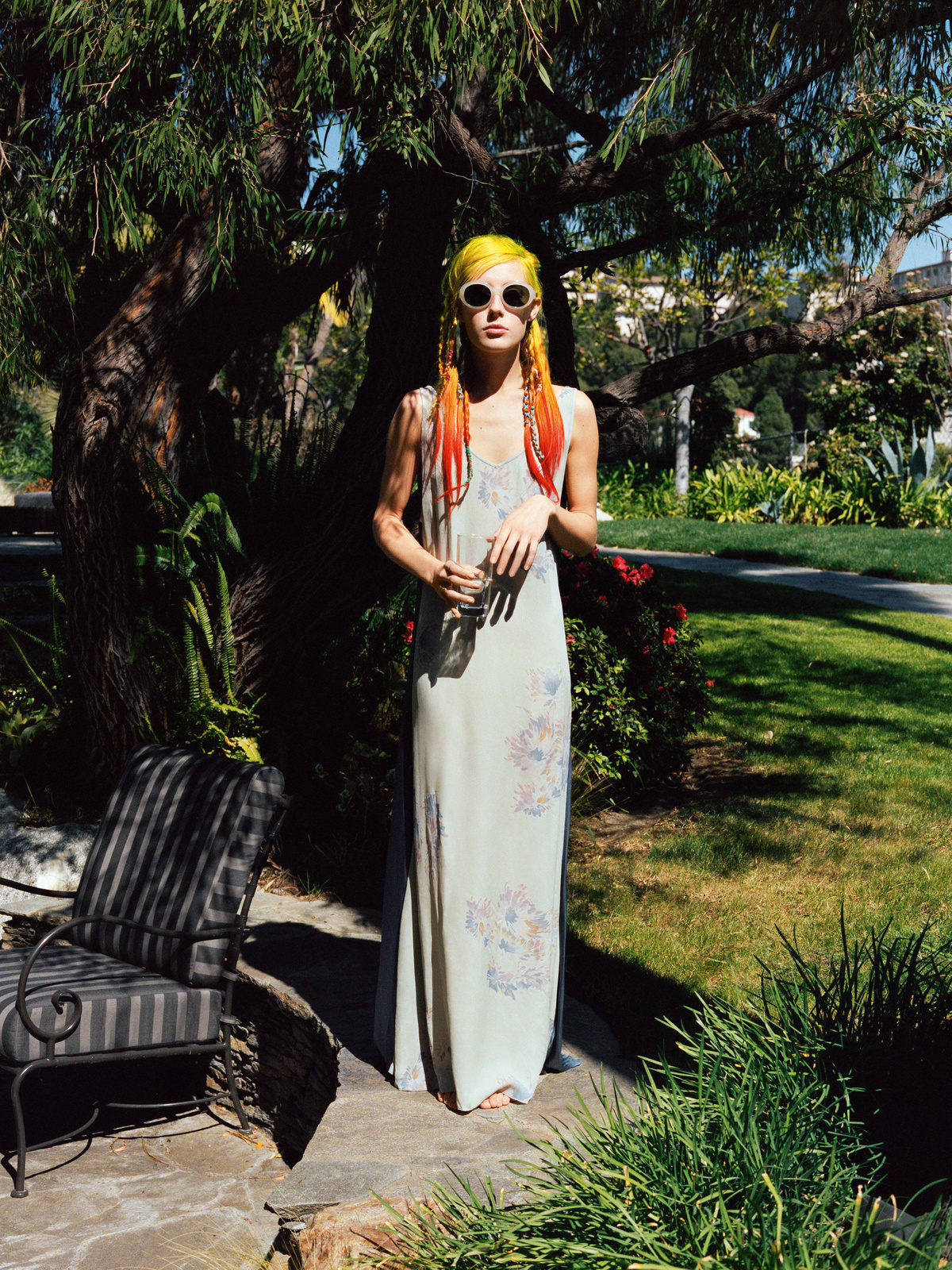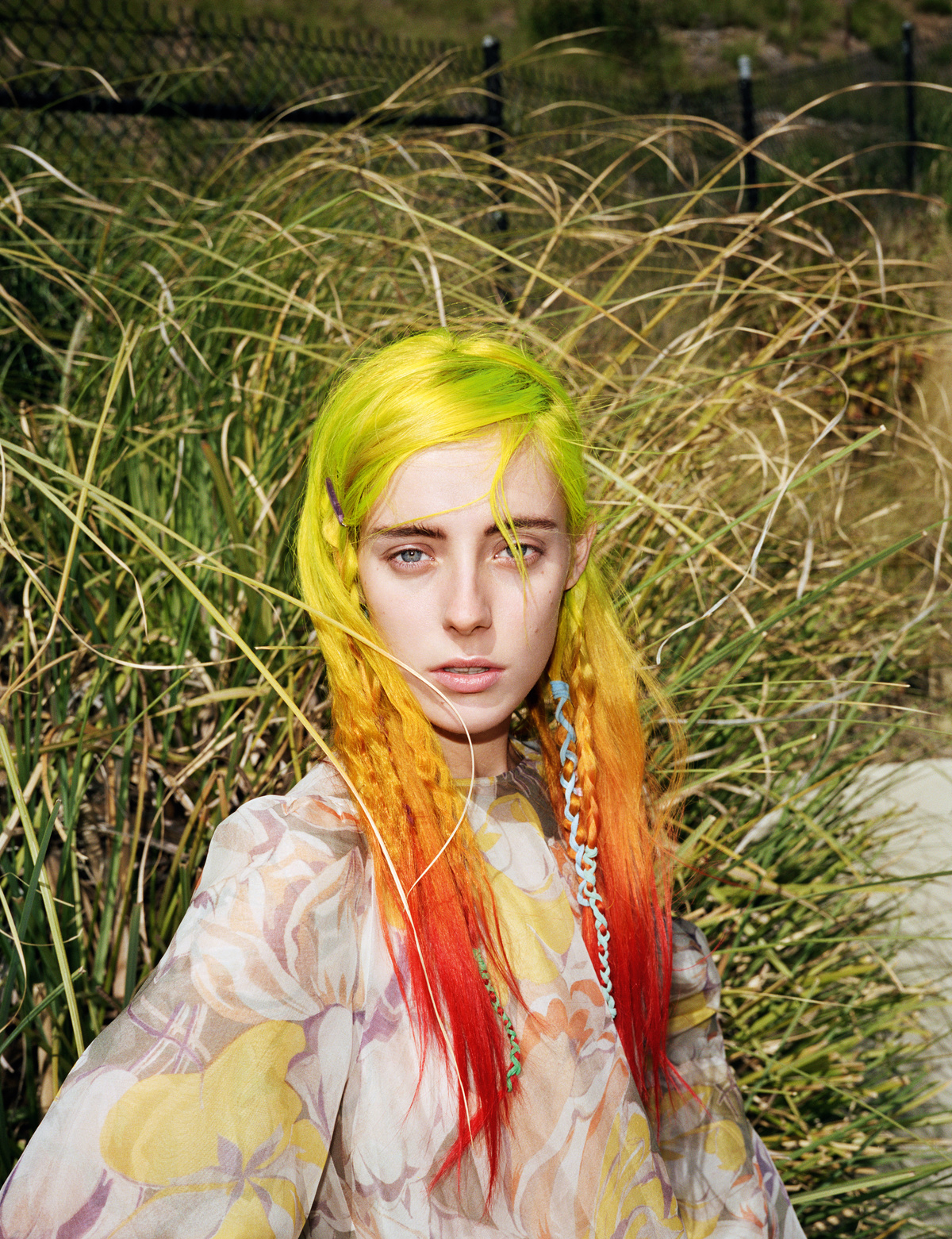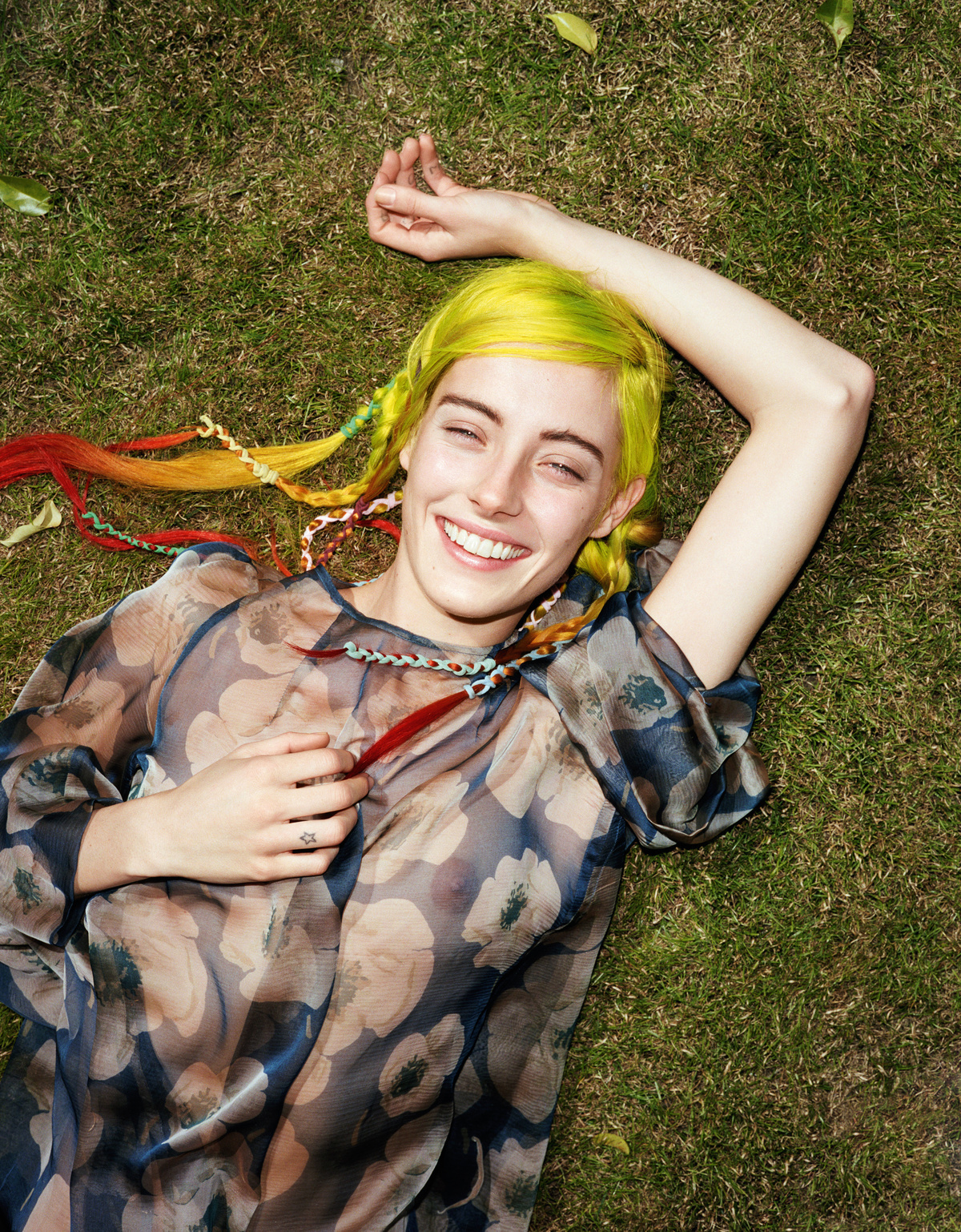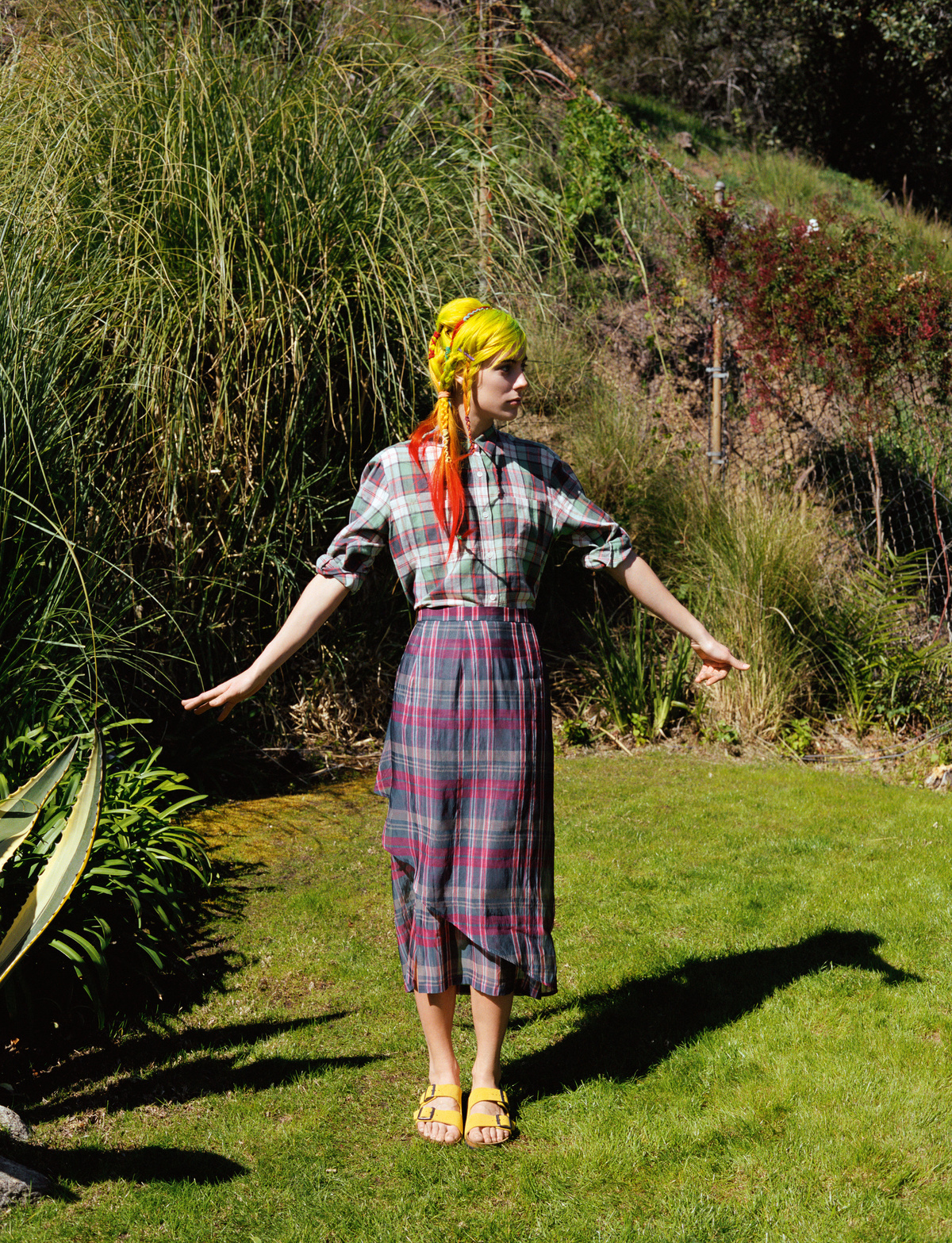Dries Van Noten is the archetypal gentleman. Dressed in a crisp blue shirt and chinos, he’s laid back and charming and makes you feel immediately at ease. Dries’ studio, located in a five-storey warehouse on the Antwerp docks, is as quietly impressive as his clothes. There’s a family atmosphere to the set-up, with many of Dries’ employees having worked with him for the last ten years. We take a seat in his office, on the fourth floor, where big glass windows overlook the port. To my disappointment, his beloved Airedale Terrier, Harry, is not in the office today. “He’d cause too much disruption…” Dries says with a smile. “Most days he comes in, but then he gets in a very bad mood, because he wants to be running around in the country.”
Born in Antwerp in 1958, Dries has fashion coursing through his veins. The third generation of a family of tailors, his grandfather reworked second-hand clothing, introducing Antwerp to the concept of ready-to-wear. While his father owned a large boutique on the outskirts of Antwerp, and an outlet in the city centre, selling collections by Ungaro, Ferragamo and Zegna. As a young boy, Dries would travel with his father to see the shows in Milan, Düsseldorf and Paris, but soon realised that he would much prefer to design fashion than sell it. On finishing school, Dries enrolled at the prestigious Antwerp Royal Academy, graduating in 1980 and going on to launch his eponymous label in 1986. A master at mixing prints and textures, he found initial success as part of the Antwerp Six; a group of influential Belgium designers that included Walter Van Beirendonck, Ann Demeulemeester, Dirk Van Saene, Dirk Bikkemberg and Marina Yee.
Dries’ success as a designer has grown quietly yet stealthily in the 27 years since. Bypassing glossy advertising campaigns and promotions, he prefers his clothes to speak for themselves, which they do with gentle self-assurance. He still owns his company, which is a rarity in today’s luxury fashion market, and he only produces four collections a year, two womenwear collections and two men’s. He has never understood the need for pre-collections, perfume launches, homeware or couture. It is this less is more approach that has established his reputation as one of the most respectable and alluring designers working today. There is something gentle and inviting about Dries’ world. It has a charm and politeness, together with a personability that accompanies everything he does, right down to the box of handmade Belgium chocolates left as a gift in my hotel room, and the guide to Antwerp compiled by Dries himself. A true gentleman.

As a designer, elegance is very important to you.
For me, elegance is style. Sometimes when you think about the word elegant it can seem a little scary and a little old fashioned too. Elegance is not only a way of dressing, it’s a way of living, it’s a flair, how you do things, how you approach things and how you look at things also.
Do you think the definition of elegance has changed since you started as a designer?
Elegance is always changing. It goes with the time. As the world evolves it evolves and asks for another approach, another way of looking at things. In the past, being elegant was far stricter and had more codes and rules. But today we are free to do whatever we want. The internet has changed the waypeople look at things, how people live, how people dress and how people behave too.
Whenever I look at your collections, I always think of far-flung destinations. Is travel important to you as a designer?
Travel is important, but for my collections I travel mostly in my mind. I go to museums; I look on the internet, in books and in magazines. For inspiration, I only need one little idea, one small fragment, all the rest I can invent myself. When I started out as a young designer, I quite often thought I want to do a collection about such and such a place so I’d go there. But then I’d see so much that in fact I’d have too much information. I prefer to have one little hint of an idea and bring all the rest together as a team.
Have you read À Rebours, by Joris-Karl Huysmans? In it he argues that travelling is better in the imagination than in reality anyway.
I like to travel, but sadly it’s not always possible time wise. In summer we spend three or four days in Capri. Then we work a little bit more. We then take the car and drive to England where we visit a few gardens and a few houses. If we go to London it’s just for one day, I would prefer to stay longer and do more exhibitions, but we just don’t have the time. I really admire designers that do pre-collections; I simply don’t know when they do it!

That’s something I really admire about you. You haven’t felt like you have to do pre-collections. You’ve followed your own path very firmly.
Quite often people think it’s a trick of the system when in fact it’s just reality. Reality forces you to make certain decisions. I didn’t decide to be different and not do any publicity. I simply didn’t have a budget to do publicity. When the company was growing I decided to invest in fashion shows instead. As a young designer, a page in a magazine or a campaign doesn’t help you. Whereas a fashion show enables you to tell your story. I think fashion shows are really exciting. You can create an atmosphere. You have light, you have a soundtrack and you can tell your story in ten minutes flat, of what you’ve been working on for six months. This is also why I’ve decided not to do pre- collections. Of course, when you deliver new merchandise you sell more but I prefer to be busy with my fabrics, to work on prints and embroideries.
What do you think of the new generation of designers arguing that catwalk shows are old fashioned and they can do it online?
That is what’s so exciting about fashion today. In the past, fashion had to follow rules of presenting on the right day with the right model. Now, there are so many options. It was easy to start as a young designer in the 80s because there was more interest in fashion internationally. Now you have fashion weeks in China, Russia, South America, so you have more people. But you can use the internet to show your clothes, which is incredible.
Do you think it’s harder for younger designers today?
I think it’s different. We had to cope with other things. We had no mobile phones, no fax machines… Going to a bank in Antwerp you had to explain that yes, you want to start up a business, you’re going to try to go to Paris, you’re going to show garments, people are going to order them but they won’t do pre-payments. You have to send the goods and you’ll be lucky if they pay you three or four months later. When you go to a bank that doesn’t know anything about fashion with an explanation like that, they say are you mad? Of course, there are no problems like this now. Bankers know about fashion, they know how important it is to sell to the most important stores in the world.
What advice would you give young fashion designers starting out today?
Try to be different in every way. You have to make a collection that stands out. There’s no sense in doing something that is already out there. Wait, don’t go too fast. I came out of fashion school in 1981; I started my own business in 86 and I did my first fashion show in 92, eleven years after my academy collection.
But today everyone wants success instantly.
Precisely. Fashion school is finished and next season they want to be paraded on the catwalk. New designers are very idealistic. They think, ‘I have a friend who can help me, and someone who can do this and someone who can do that.’ That’s very good, but they need to see how they are going to survive afterwards. So many young promising talents don’t survive. Beginning first, second and third collections are easy. They are so full of ideas. But from the moment they have to deal with production problems, financial problems, trying to hire the right people and all of those things it’s a different story.

What do you think is the future of fashion? Do you think there is going to be a backlash against the ever-increasing number of shows and collections?
There’s too much fashion at the moment. In the past, you only had couture and ready-to-wear, so there was a limitation to the quantity of impressions that you, as a fashion follower, had to take in. You knew fashion week was twice a year, and then you would see amazing images from couture that were bigger than life, but still interesting. Now you can go Style.com and everyday you have something new to look at. I think one of the big problems is so many fashion shows are bigger than life. They create clothes that are never produced, which can be fun, but not for me, it’s going a little bit too far. I think the consumers are getting a little bit confused.
Do you think the industry will shrink again, and go back to something more intimate?
I think a certain client will look for something else. In the past there was a clear difference between couture images and high street stores. But today high street stores do fashion shows too and sometimes copy clothes from designers. They also use the same models.
Like H&M for instance, who use all the big supermodels.
Exactly. In the past, the customer had the prestige of wearing something that was presented on a supermodel, which in the past was couture, but which is now the high street. It’s creating confusion.
So where do you stand? On one side you’ve got Burberry hosting their catwalk shows online where you can ‘click-to-buy’, and on the other side you’ve got Tom Ford saying, ‘you can’t write about it, can’t photograph it’.
I think it’s fantastic that both exist, but I am not a fan of the ‘click-to-buy’. I think it makes people very unhappy because you click-to-buy a coat, which you receive in the wrong season so you can’t wear it. It’s a nightmare. For me, that’s pushing it too far. Soon clients will disconnect and say, ‘Sorry, this is too much.’
Emotion is very important to you as a designer. Can you tell me a little more about this?
Yes, I like the emotion you get when you go into a store. When you’re in a nice environment and you have nice people to help you. With the type of garments I make, quite often they need a little explanation. You don’t have to be ashamed that you need somebody who knows the clothes to say, ‘With your body type, wear this on top; wear this like that or combined with that.’
Do you ever go into your stores yourself and see who your customer is?
Yes, I follow very, very closely. I am not ashamed to say that I am also a businessman. I like the business of fashion, to talk with customers, to talk with buyers, to talk with people. To see how big the fitting room can be, and how many metres of racks we’ll need and how we can build it. It is also part of my job and I like to do that.
I think you can tell there is a personal touch to Dries, especially at the shows, where you always offer food and drink. You’re a good host.
Yes. If I had to design purely fashion in my life, I would be a very unhappy person. I love fashion, but I also love fabrics and I love craftsmanship. It’s the total package that I love. You can put the most beautiful garment in the wrong environment, or on the wrong model, or with the wrong hair, and the clothes no longer tell the story that you wanted to tell.
You’re renowned for your stunning embroidery, a lot of which is done in India. Can you tell me about that?
I started doing embroidery in India in 1988. I was the first designer to go to India to do creative embroidery at the time. I still work with the same village in Calcutta, but most of the embroidery is done in villages around it, they use a system of cottage embroidery. Embroidery in India is a very prestigious job. Most people think it’s done by women and children but it’s mostly done by men.

Do you ever go out yourself and meet the villages?
Yes, I went two or three years ago. It’s fantastic. Because embroidery is such a prestigious job, the villages want to work hard to deliver good quality. So it’s a system that sustains itself. When the quality isn’t good the village lose their job and ‘the responsible’ loses his job and his faith. Men do the embroidery, the cutting of the garments and the stitching. While the women do the ironing, hand-seams and packing. It’s completely divided.
When starting a collection do you find words as inspiring as images?
I like words. When you give an image to your assistants, it’s dictating. It’s blocking their imagination. But with words, everybody can bring their own association to the table. What one word means for me might mean something completely different to you. An image, especially a photograph, is far more limiting.
Does your woman change every season, or does she just evolve?
I want her to change each season. So we’ll always look into where she might travel to, is it to the Scottish Highlands, or is it to Barcelona? That way you can always connect a collection with a sense of time. In the past people wanted to go to Barcelona or on city trips but now nature is what people want. If I make the most beautiful clothes but at the end of the day they’re not something that I would like to wear now, then they’re wrong.
What is the biggest misconception about you as a designer that you’d like to set straight?
That I am an ethnic designer. I know it’s difficult for the press, they have to see so many fashion shows and because of this they have to pigeonhole designers. The only thing I find strange is when you move away from what they expect you to do, then they don’t feel comfortable anymore. I did a collection about Francis Bacon once, which is still one of my favourite collections of all time. But afterwards the press still wrote that it was an ethnic collection. I thought, ‘Where is this coming from?’ There was not one piece of ethnic in there! The clothes, the colours and the cut were inspired by Francis Bacon.

Nature is important to you and I’ve heard you have a very beautiful garden… Gardening keeps me alive. Have you never been inspired to do a gardening collection?
No, I don’t want to mix fashion with gardening. The garden is a personal thing. It keeps me human and in balance.
Do you grow your own fruit and vegetables?
Yes, but in winter I have to go to the supermarket. I am lucky to live in a little city where we have a Saturday market. So early in the morning I go there to pick my vegetables. In summer I stop buying vegetables and eat from my garden. The moment I feel most rich, is when I can go to the vegetable garden and pick a few peas, beans and strawberries. It’s amazing. I feel so happy, so lucky.
Do you have a gardener as well?
Yes, because unfortunately a garden is like a dog and has to be looked after. Otherwise, I’d come back from Paris, and if it were a dry week I wouldn’t have anything left!
Other than nature, Harry and fashion, what makes you happy?
A lot of things. I’m very spoilt that I can do all the things I love and still get money at the end of it. It’s fun. I like beautiful things; I like buildings; I like interior design; I love buying beautiful objects on the internet to put in my stores. I especially love meeting so many inspiring people. People often say the fashion industry is a narrow, small world. But in fashion you meet so many interesting people. You can do collaborations with artists that you admire and then they become family and friends, which I really love. It’s all positive, no?
Credits
Text Holly Shackleton
Photography Angelo Pennetta
Styling Sara Moonves
Hair Christiaan Make-up Sara Glick at The Magnet Agency using Lancôme
Photography assistance Johnny Dufort, Porter Counts
Styling assistance Olivia Horner
Production Lucie Newbegin at M.A.P Ltd
Retouching OUTPUT
Printing and scanning Bayeux
Model Chloe Norgaard at Premier Model Management
Special thanks to Nancy Moonves
Chloe wears all clothes Dries Van Noten.
